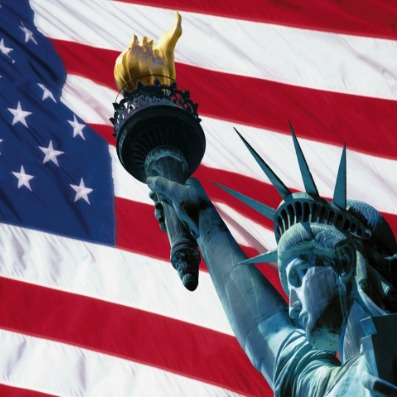 The American Wind Energy Association (AWEA) reports that more than 4.8 GW of capacity was installed during 2014 in the U.S., pushing its cumulative total to nearly 65.9 GW. In 2013, the U.S. wind industry installed barely more than 1 GW of capacity.
The American Wind Energy Association (AWEA) reports that more than 4.8 GW of capacity was installed during 2014 in the U.S., pushing its cumulative total to nearly 65.9 GW. In 2013, the U.S. wind industry installed barely more than 1 GW of capacity.
However, the amount installed in 2014 still falls far short of the record 13 GW that the U.S. wind energy industry was able to complete during 2012.
According to its fourth quarter market report, AWEA finds the following:
- Wind projects were completed in 19 states in 2014, adding enough capacity to power over 1.4 million U.S. homes;
- Similar to the start of 2014, the industry continues to see near-record levels of under-construction activity, with over 12,700 MW of wind under construction as 2015 began;
- Construction activity is currently ongoing in 22 states. New construction starts in the fourth quarter totaled approximately 2.8 MW;
- Utilities continue to sign some of the lowest-cost long-term contracts ever seen for wind energy. Since the beginning of 2014, there have been more than 3.3 GW of power purchase agreements for wind power signed across 14 states. In total, more than 12 GW of long-term contracts for wind power have been signed since the start of 2013; and
- Wind installations in Texas led the way in 2014 with over 1.8 GW of new capacity. Rounding out the top five states adding new capacity in 2014 are Oklahoma, Iowa, Washington and Colorado.
The association pinned the shortfall on uncertainty in federal policy. For example, the most recent production tax credit (PTC) was extended for a grand total of two weeks at the end of last year and has now expired again.
And, the uncertainty has taken a dramatic toll on the U.S. wind industry, notes AWEA. Nearly 30,000 jobs and tens of billions of dollars in private investment were lost due to the PTC lapse at the beginning of 2013, the last time Congress allowed the credit to expire even briefly.
Wind installations plummeted 92% in 2013 amid the uncertainty. A multiyear extension, now, would enable the industry to continue lowering costs, further expanding the benefits wind energy provides to consumers, AWEA notes.
‘Wind is gaining strength, but as recent history shows, we can do a whole lot more,’ says Tom Kiernan, CEO at AWEA. ‘It has been U.S. policy for the last 100 years to encourage energy production by giving tax relief to different energy sources. Every other source of electricity in this country has their tax relief. Congress must find a way forward so we don't lose years of investment and send this promising industry over another cliff.’
After the AWEA presentation, Jonathan Weisgall, vice president for legislative and regulatory affairs at Berkshire Hathaway Energy Co., said the $1.9 billion wind farm that his company is building in Iowa is the largest economic development project in the state's history. When finished, it will pay landowners $3 million a year for leases and supply customers such as Google, Facebook and Microsoft with clean energy.
‘Our customers want wind,’ Weisgall said. ‘We like wind because it's a hedge against fossil prices, and wind, with no fuel costs associated, can keep those rates stable.’
He added that wind energy ‘helps diversify the grid and improves our energy security,’ and it enables utilities like his to reduce carbon emissions and meet current and future environmental standards. ‘It's good for our customers, it is good for the environment, and it has certainly been good for the state of Iowa,’ Weisgall said.



